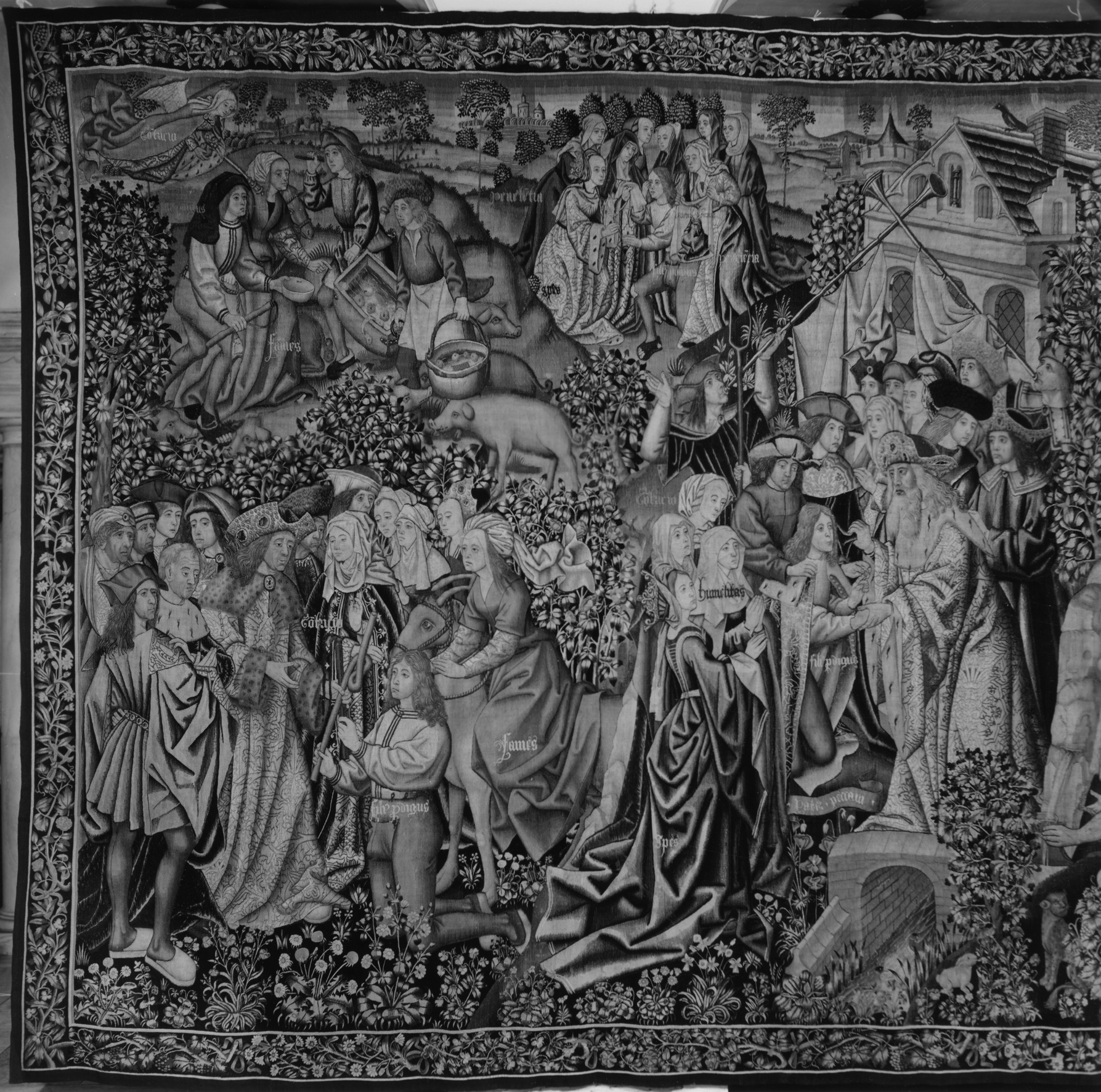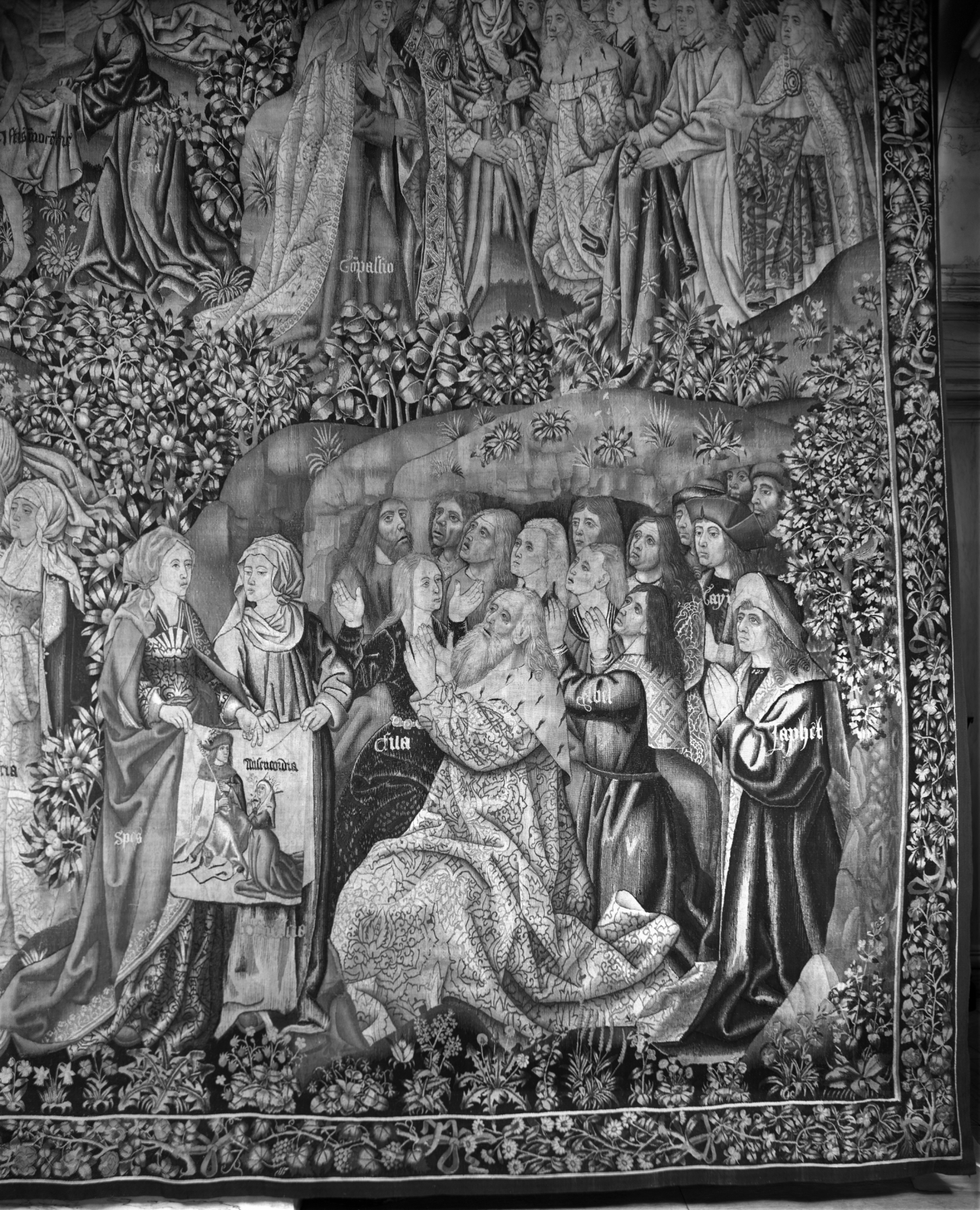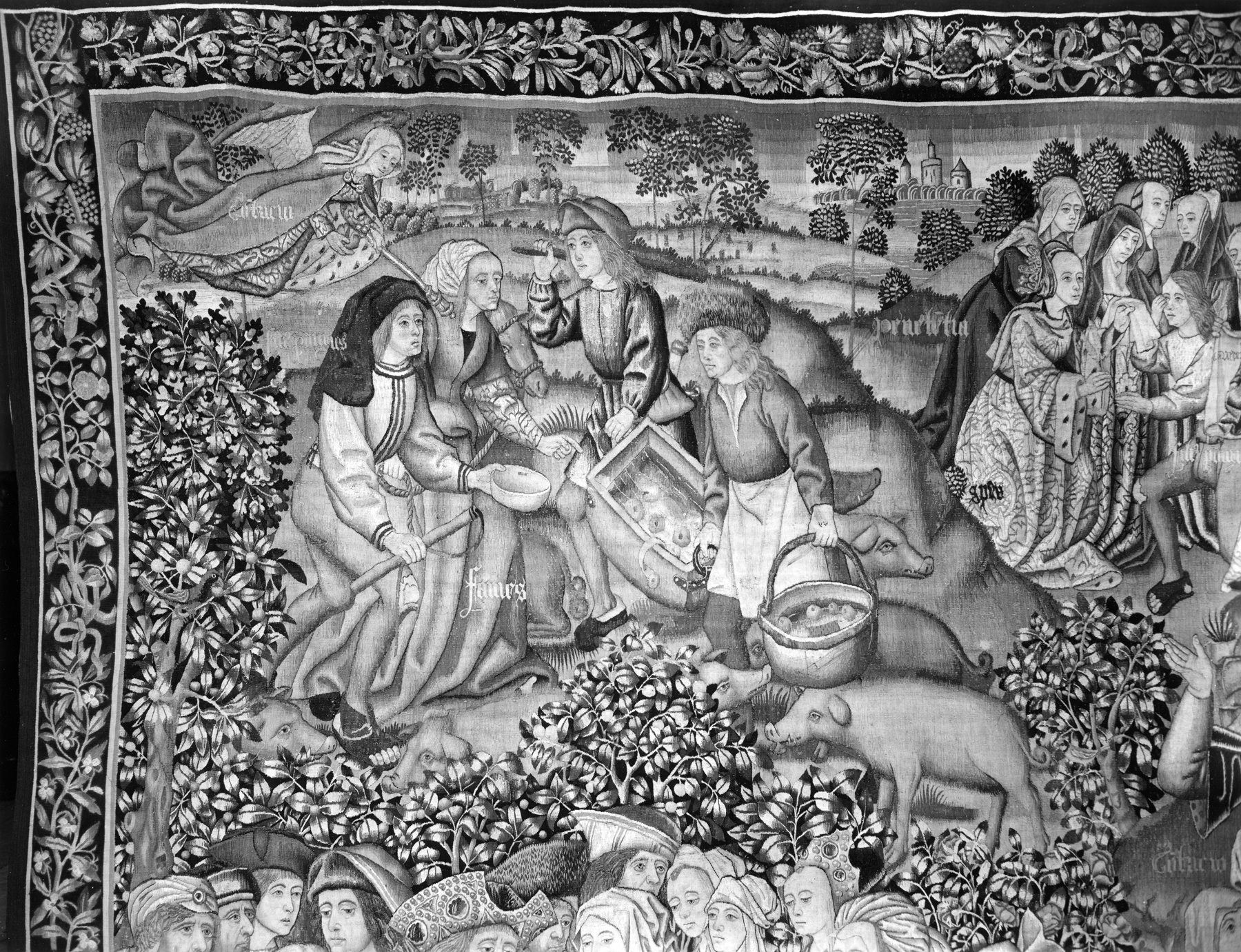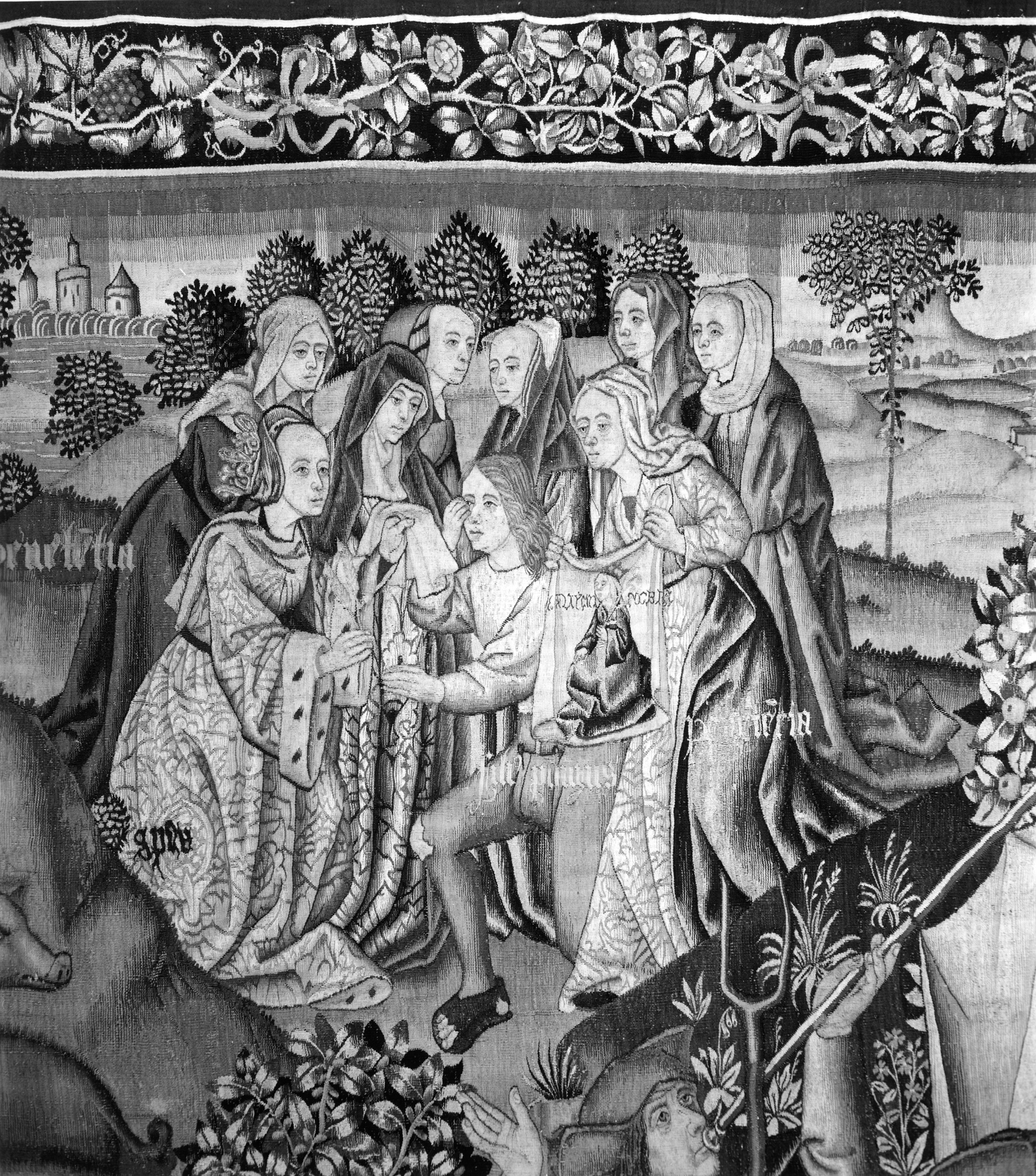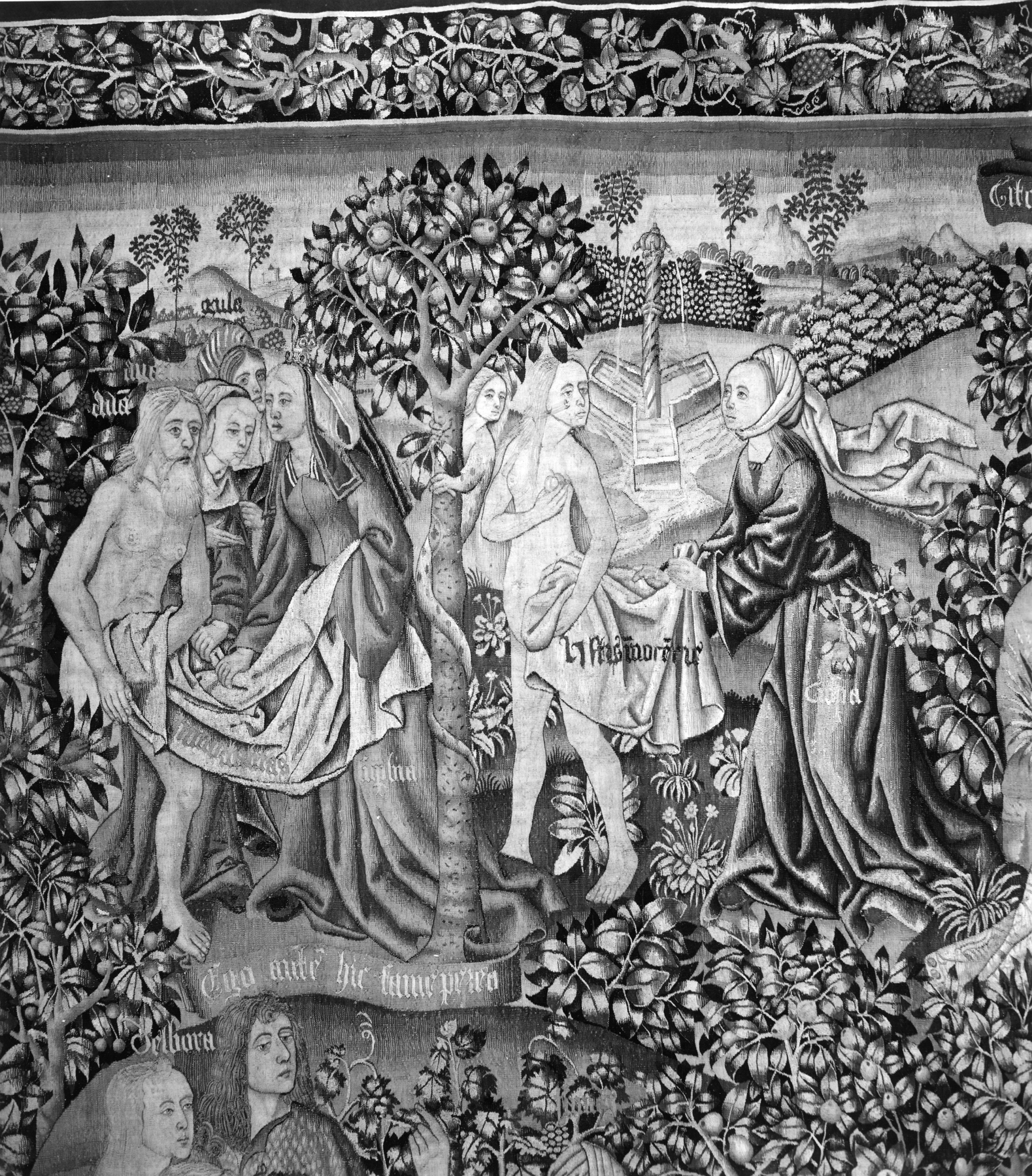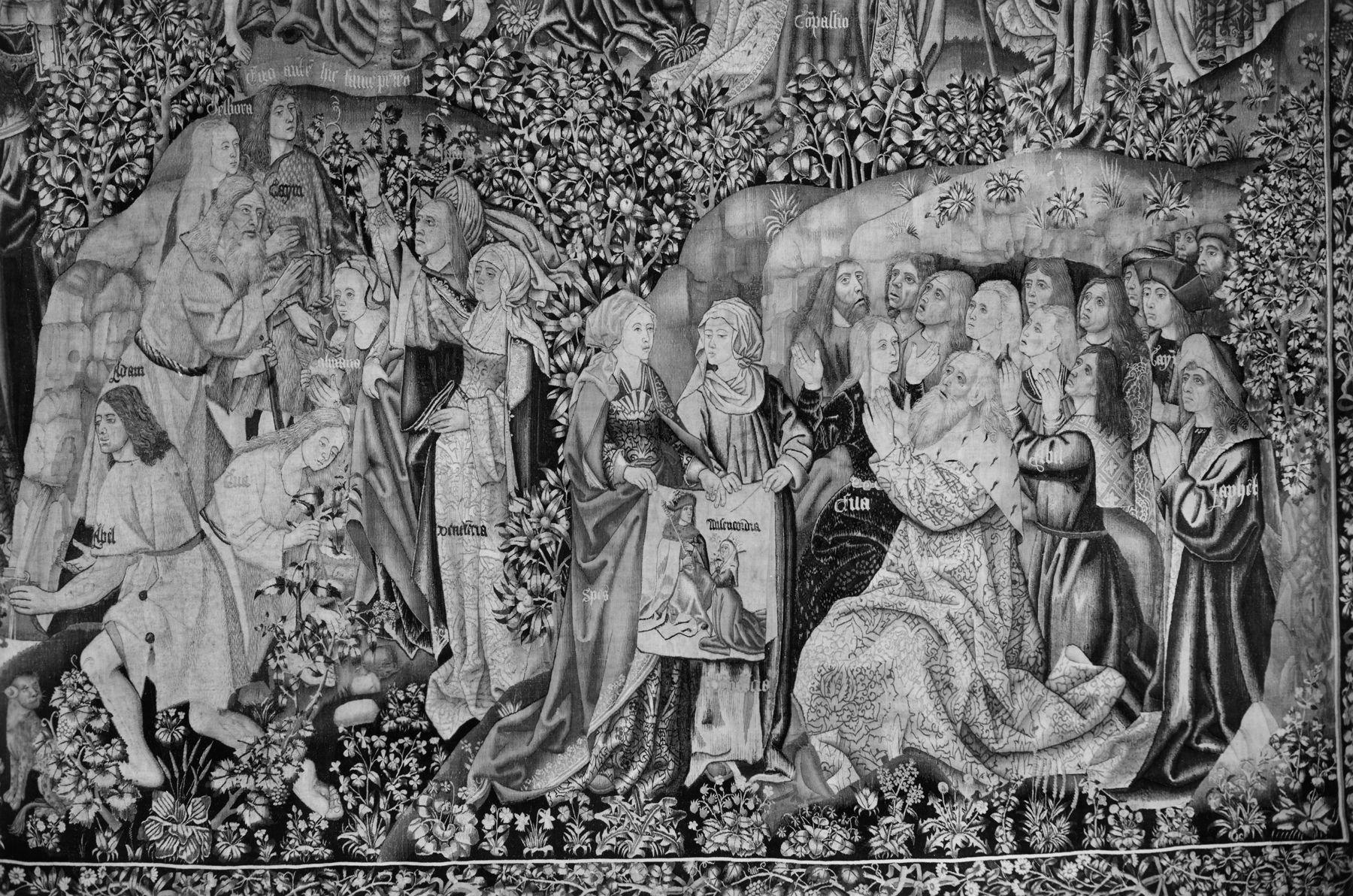The Prodigal Son
This tapestry and its companion in the Speed Museum, Louisville, would have decorated the great hall, most likely that of a town hall, and provided winter insulation.
Christ's parable of the Prodigal Son conveys divine forgiveness and redemption. In the Louisville tapestry, the rich young man squanders his father's money. Here, the prodigal son, after being reduced to eating pig slops, kneels before female personifications of the Virtues and then before their real life male counterparts, Good Citizens. Attended by this throng of supporters, the young man is welcomed home by his father.
On the right side, the sins of Adam and Eve as well as Cain and Abel provide Old Testament parallels to this new Testament parable. At the far right, Christ returns with the promise of redemption to penitent Old Testament figures who emerge from Hell.
Many of the figures on the lower register are individualized portraits, perhaps of those who contributed to the cost of the tapestry.
Provenance
Provenance (from the French provenir, 'to come from/forth') is the chronology of the ownership, custody, or location of a historical object. Learn more about provenance at the Walters.
Coll: Leo Nardu, Suresnes, Belgium; Lowengard, Paris; French & Co., NY (no. 189996). Acquired from From and Co., NY, May 8, 1953.
Geographies
Belgium, Brussels (Place of Origin)
Measurements
Overall: 170 x 334 in. (431.8 x 848.4 cm)
Credit Line
Museum purchase, 1953
Location in Museum
Not on view
Accession Number
In libraries, galleries, museums, and archives, an accession number is a unique identifier assigned to each object in the collection.
In libraries, galleries, museums, and archives, an accession number is a unique identifier assigned to each object in the collection.
82.26


